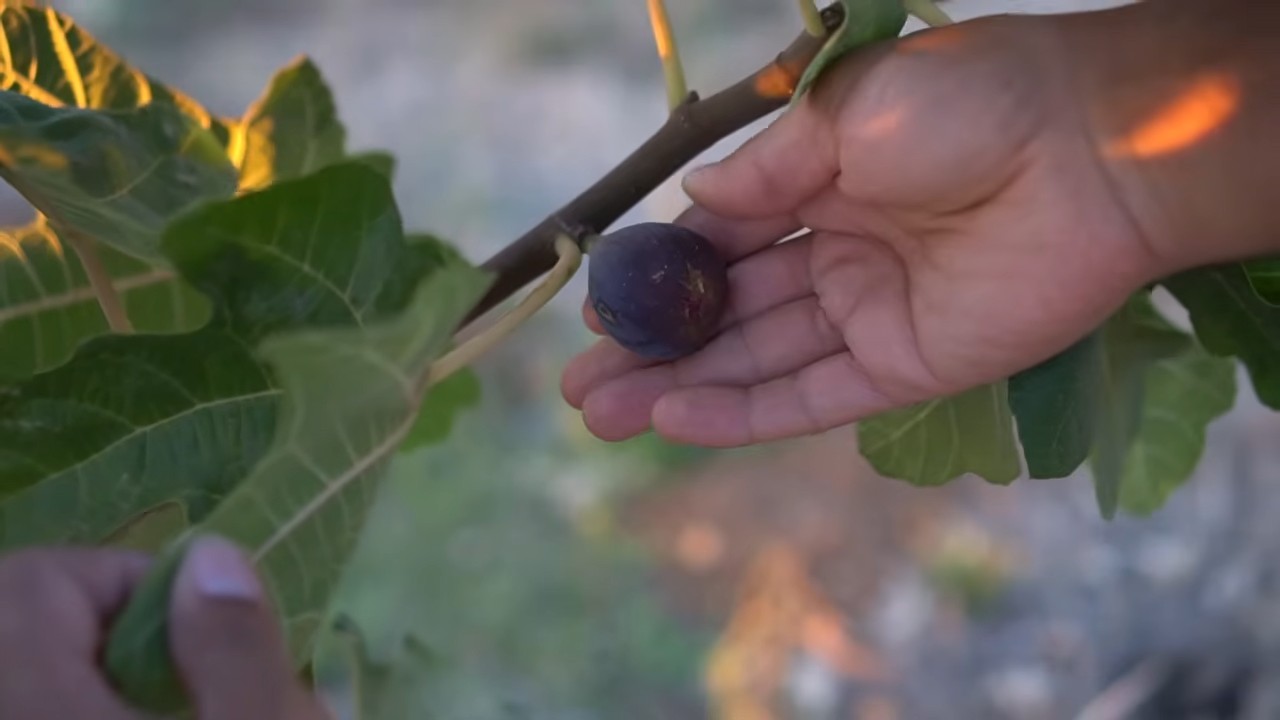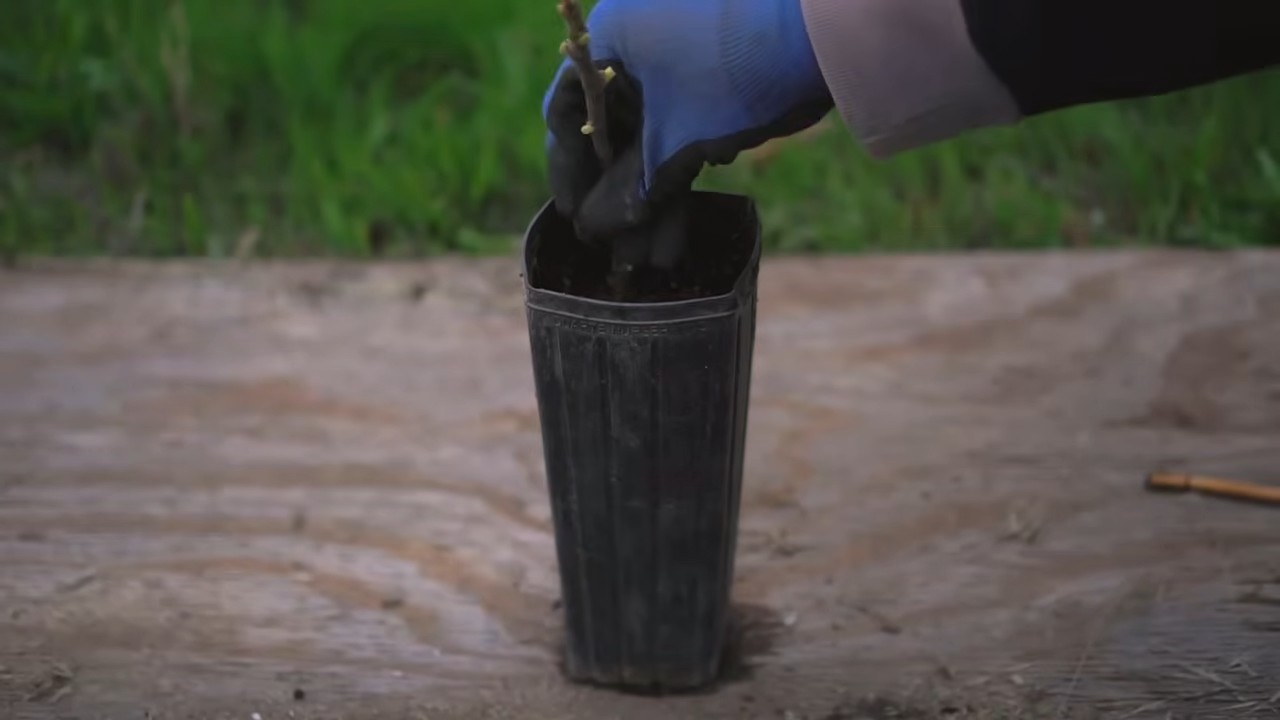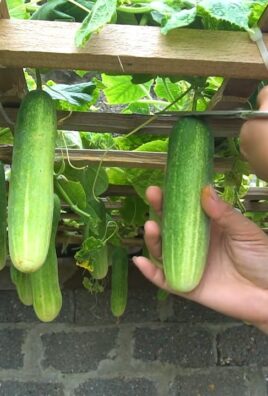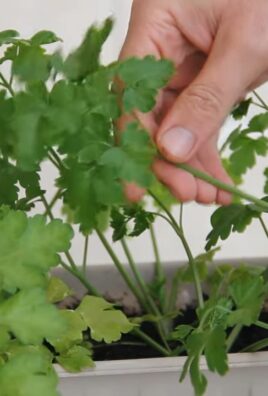Grow Figs Indoors? Absolutely! Imagine plucking sweet, juicy figs right from your own indoor garden, even when the weather outside is frightful. It might sound like a tropical dream, but with the right know-how, it’s totally achievable. For centuries, figs have been cherished across cultures, from ancient Rome where they symbolized prosperity and peace, to the Mediterranean where they’re a staple ingredient.
But let’s face it, not everyone lives in a sunny Mediterranean climate. That’s where this DIY guide comes in! I’m going to share my best-kept secrets for successfully cultivating these delicious fruits within the cozy confines of your home. Whether you’re a seasoned gardener or just starting out, learning how to grow figs indoors opens up a world of possibilities. Think fresh fig jams, delectable desserts, or simply enjoying a healthy snack straight from the source.
Why do you need this DIY trick? Because store-bought figs can be expensive and sometimes lack that fresh, vibrant flavor. Plus, there’s something incredibly rewarding about nurturing a plant from seedling to fruit-bearing beauty. So, grab your gardening gloves, and let’s embark on this exciting journey to bring the taste of the Mediterranean indoors!

Growing Figs Indoors: Your DIY Guide for a Bountiful Harvest
I love figs! And what could be better than harvesting them right in your own home? It might seem a bit intimidating at first, but with the right preparation and care, you can easily grow fig trees indoors and enjoy a delicious harvest. Here is my comprehensive DIY guide that shows you how, step by step.
What You Need: The Right Equipment and Preparation
Before we get started, make sure you have everything you need. This will save time and frustration!
- Fig tree seedling or cutting: Choose a variety that is suitable for growing in pots. Popular options include ‘Brown Turkey,’ ‘Celeste,’ or ‘Little Miss Figgy.’ I have personally had very good experiences with ‘Brown Turkey.’
- Large pot: The pot should be at least 45 cm (18 inches) in diameter, or even larger. Fig trees need space for their roots.
- High-quality potting soil: Use a well-draining potting soil that is rich in organic matter. A mixture of potting soil, compost, and perlite is ideal.
- Drainage material: Pebbles, clay shards, or expanded clay pebbles for the bottom of the pot to prevent waterlogging.
- Garden shears: For pruning the tree.
- Watering can or hose: For watering.
- Fertilizer: A balanced liquid fertilizer for fruit trees.
- Grow light (optional): If your home does not provide enough sunlight.
- Spray bottle: For misting the leaves.
Step-by-Step Guide: Your Fig Tree Moves In
Now let’s get down to it! Follow these steps to successfully plant your fig tree.
- Prepare the pot: Start by placing a layer of drainage material at the bottom of the pot. This prevents the roots from sitting in water and rotting. I like to use expanded clay pebbles because they are lightweight and retain water well.
- Fill with soil: Fill the pot with the prepared potting soil. Leave about 5-10 cm (2-4 inches) of space at the top.
- Prepare the seedling: If you have a seedling, gently loosen the roots before placing it in the pot. If you are using a cutting, make sure it is well-rooted before planting it.
- Plant the tree: Place the seedling or cutting in the center of the pot. Fill the pot with soil and press it down lightly. Make sure the root crown (the point where the trunk transitions to the roots) is just above the soil surface.
- Water: Water the tree thoroughly until water runs out of the drainage holes. This helps to settle the soil and moisten the roots.
- Choose the right location: Place the pot in a sunny spot. Fig trees need at least 6-8 hours of direct sunlight per day. A south-facing window is ideal. If you don’t have enough sunlight, use a grow light.
Care: Keeping Your Fig Tree Happy
Proper care is crucial for the growth and fruiting of your fig tree.
Watering
- Water regularly: Fig trees need regular watering, especially during the growing season. Water when the top layer of soil feels dry.
- Avoid waterlogging: Make sure the water can drain well to prevent waterlogging.
- Water less in winter: In winter, when the tree is dormant, reduce watering.
Fertilizing
- Fertilize regularly: During the growing season (spring and summer), fertilize the tree every 2-4 weeks with a balanced liquid fertilizer for fruit trees.
- Reduce fertilizer in winter: In winter, when the tree is dormant, reduce or stop fertilizing altogether.
Pruning
- Prune regularly: Prune the tree regularly to maintain its shape and encourage fruit production. Remove dead, diseased, or crossing branches.
- Prune in late winter or early spring: The best time for pruning is in late winter or early spring, before the tree starts new growth.
Overwintering
- Overwinter in a cool place: Fig trees need a cool dormant period in winter to produce fruit the following year. Place the tree in a cool, bright location, such as an unheated basement or garage. The temperature should be between 0 and 10 degrees Celsius (32-50°F).
- Water and fertilize less: Reduce watering and fertilizing during the dormant period.
- Protect from frost: Make sure the tree is protected from frost.
Pests and Diseases
- Check regularly: Check the tree regularly for pests and diseases.
- Aphids, spider mites, and mealybugs: Common pests include aphids, spider mites, and mealybugs. You can combat these with an insecticide or a soap solution.
- Fungal diseases: Watch for signs of fungal diseases like powdery mildew or rust. You can treat these with a fungicide.
- Good ventilation: Ensure good air circulation to prevent fungal diseases.
The Harvest: Your Reward for the Effort
After all the work, comes the best part: the harvest!
- Recognizing ripe figs: Ripe figs are soft and yield slightly when you touch them. They also have a deep color, depending on the variety.
- Harvest carefully: Harvest the figs carefully to avoid damaging the tree.
- Enjoy fresh or process: Enjoy the fresh figs straight from the tree or process them into jam, chutney, or other delicacies.
Additional Tips and Tricks: For Even More Success
Here are a few additional tips that can help you grow your fig tree even more successfully:
- Rotate the pot regularly: Rotate the pot regularly so the tree gets even light from all sides.
- Spray the leaves: Spray the leaves regularly with water to increase humidity. This is especially important if the air in your home is dry.
- Repotting: Repot the tree into a larger pot every 2-3 years to give its roots more space.
- Be patient: Fig trees take time to bear fruit. Be patient and don’t give up!
I hope this guide helps you grow your own fig tree indoors. It is a rewarding project that will bring you many years of joy and delicious figs. Good luck

Conclusion
So, there you have it! Growing figs indoors might seem like a challenge reserved for seasoned gardeners, but with a little know-how and the right approach, you can absolutely enjoy the sweet, delectable taste of homegrown figs right from the comfort of your own home. This DIY trick isn’t just about saving money; it’s about connecting with nature, experiencing the satisfaction of nurturing a plant from seedling to fruit, and enjoying a truly unique and rewarding culinary experience.
Why is this a must-try? Because it opens up a world of possibilities! Imagine plucking a perfectly ripe fig from your own tree on a cold winter day, adding it to a cheese board, or using it in a delicious dessert. It’s a conversation starter, a source of pride, and a testament to your green thumb (even if you’re just starting out!). Plus, indoor fig trees can add a touch of Mediterranean charm to your living space, purifying the air and creating a more relaxing and inviting atmosphere.
Don’t be afraid to experiment with different fig varieties. While the ‘Brown Turkey’ fig is a popular choice for beginners due to its resilience and self-pollinating nature, other varieties like ‘Black Mission’ or ‘Celeste’ can also thrive indoors with proper care. Consider trying different potting mixes to find what works best for your specific environment. Some gardeners swear by a blend of potting soil, perlite, and compost, while others prefer a more specialized fig tree potting mix.
And speaking of variations, think about the different ways you can use your homegrown figs. Beyond eating them fresh, you can dry them for a chewy snack, make fig jam, or even use them in savory dishes like fig and prosciutto pizza. The possibilities are endless!
We wholeheartedly encourage you to give this DIY trick a try. It’s an investment in your well-being, your culinary creativity, and your connection to the natural world. Growing figs indoors is a journey, and we’re confident that you’ll find it to be a rewarding one.
Once you’ve embarked on your indoor fig-growing adventure, we’d love to hear about your experience! Share your tips, tricks, and triumphs in the comments below. Let’s build a community of indoor fig enthusiasts and learn from each other. What variety did you choose? What challenges did you face, and how did you overcome them? Your insights could be invaluable to other aspiring indoor fig growers. So, go ahead, get your hands dirty, and start growing your own delicious figs today! We can’t wait to hear your stories.
Frequently Asked Questions (FAQ)
What is the best fig variety to grow indoors?
The ‘Brown Turkey’ fig is often recommended for beginners due to its self-pollinating nature and relatively easy care. It’s also known for producing a good yield of delicious figs. Other suitable varieties include ‘Black Mission,’ ‘Celeste,’ and ‘Little Miss Figgy.’ Consider your local climate and the size of your growing space when making your selection. Dwarf varieties are particularly well-suited for indoor cultivation.
How much sunlight do indoor fig trees need?
Fig trees thrive in bright, direct sunlight. Aim for at least 6-8 hours of sunlight per day. If you don’t have a south-facing window that provides sufficient light, consider supplementing with a grow light. LED grow lights are energy-efficient and can provide the full spectrum of light that fig trees need to flourish. Rotate your fig tree regularly to ensure that all sides receive adequate sunlight.
What type of soil is best for growing figs indoors?
Fig trees prefer well-draining soil that is rich in organic matter. A good potting mix for indoor fig trees typically consists of a blend of potting soil, perlite, and compost. Perlite helps to improve drainage, while compost provides essential nutrients. You can also purchase specialized fig tree potting mixes that are specifically formulated to meet the needs of these plants. Avoid using heavy, clay-based soils, as they can retain too much moisture and lead to root rot.
How often should I water my indoor fig tree?
Water your fig tree when the top inch of soil feels dry to the touch. Avoid overwatering, as this can lead to root rot. During the growing season (spring and summer), you may need to water your fig tree more frequently than during the dormant season (fall and winter). Ensure that the pot has drainage holes to allow excess water to escape. A good rule of thumb is to water thoroughly until water drains out of the bottom of the pot.
Do indoor fig trees need fertilizer?
Yes, fig trees benefit from regular fertilization, especially during the growing season. Use a balanced fertilizer (e.g., 10-10-10) diluted to half strength. Fertilize every 2-4 weeks during the spring and summer months. Reduce or eliminate fertilization during the dormant season. Organic fertilizers, such as compost tea or fish emulsion, can also be used to provide essential nutrients.
How do I pollinate my indoor fig tree?
Many fig varieties, such as ‘Brown Turkey,’ are self-pollinating and do not require any assistance with pollination. However, some varieties require pollination by fig wasps. If you are growing a variety that requires pollination, you may need to hand-pollinate the flowers using a small paintbrush. Gently transfer pollen from the male flowers to the female flowers.
How do I prune my indoor fig tree?
Pruning is essential for maintaining the shape and size of your indoor fig tree and for promoting fruit production. Prune your fig tree in late winter or early spring, before new growth begins. Remove any dead, damaged, or crossing branches. You can also prune to shape the tree and encourage branching. Avoid pruning too heavily, as this can reduce fruit production.
What are common pests and diseases that affect indoor fig trees?
Common pests that can affect indoor fig trees include spider mites, aphids, and scale. Regularly inspect your tree for signs of infestation and treat promptly with insecticidal soap or neem oil. Root rot is a common disease that can affect fig trees, especially if they are overwatered. Ensure that your tree is planted in well-draining soil and avoid overwatering.
How do I overwinter my indoor fig tree?
During the dormant season (fall and winter), your fig tree will need less water and fertilizer. Reduce watering frequency and eliminate fertilization. You can also move your fig tree to a cooler location with less light. Some gardeners even move their fig trees to an unheated garage or shed for the winter. This period of dormancy is essential for the tree to rest and prepare for the next growing season.
Can I grow figs from cuttings indoors?
Yes, growing figs from cuttings is a relatively easy and effective way to propagate new fig trees. Take cuttings from healthy, mature branches in late winter or early spring. Dip the cut ends in rooting hormone and plant them in a well-draining potting mix. Keep the cuttings moist and warm, and they should root within a few weeks. Once the cuttings have rooted, you can transplant them into larger pots.





Leave a Comment